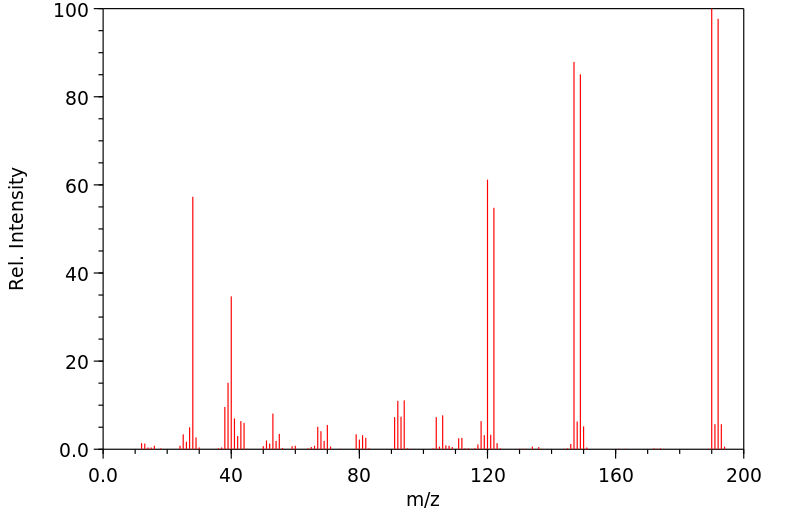代谢
嗜酸性粒细胞使用嗜酸性粒细胞过氧化物酶、过氧化氢(H2O2)和溴离子(Br-)生成次溴酸(HOBr),这是一种溴化中间体。这种强氧化剂可能在宿主防御入侵寄生虫和嗜酸性粒细胞介导的组织损伤中发挥作用。在本研究中,作者们探讨了嗜酸性粒细胞过氧化物酶产生的HOBr可能氧化核酸的可能性。当作者们将尿嘧啶、尿苷或脱氧尿苷暴露于试剂HOBr时,每个反应混合物都产生了一个主要氧化产物,该产物在反相高效液相色谱上与相应的溴化嘧啶共迁移。嗜酸性粒细胞过氧化物酶- -Br-系统也将尿嘧啶转化为一个主要氧化产物,并且产量接近定量。质谱、高效液相色谱、紫外-可见光谱和核磁共振光谱鉴定产物为5-溴尿嘧啶。嗜酸性粒细胞过氧化物酶需要 和Br-来产生5-溴尿嘧啶,表明HOBr是该反应的中间体。初级和次级溴胺也能溴化尿嘧啶,这表明长寿命的溴胺也可能是有生理相关性的溴化中间体。人嗜酸性粒细胞使用嗜酸性粒细胞过氧化物酶- -Br-系统氧化尿嘧啶。通过质谱、高效液相色谱和紫外-可见光谱鉴定产物为5-溴尿嘧啶。总的来说,这些结果表明嗜酸性粒细胞过氧化物酶产生的HOBr将尿嘧啶氧化为5-溴尿嘧啶。胸腺嘧啶磷酸化酶,一种嘧啶挽救酶,将5-溴尿嘧啶转化为5-溴脱氧嘧啶,这是胸腺嘧啶的致突变类似物。这些发现提出了嗜酸性粒细胞过氧化物酶产生的卤化核苷酸可能在嗜酸性粒细胞丰富的炎症部位产生细胞毒性和突变效应的可能性。
Eosinophils use eosinophil peroxidase, hydrogen peroxide (H(2)O(2)), and bromide ion (Br(-)) to generate hypobromous acid (HOBr), a brominating intermediate. This potent oxidant may play a role in host defenses against invading parasites and eosinophil-mediated tissue damage. In this study, /the authors/ explore the possibility that HOBr generated by eosinophil peroxidase might oxidize nucleic acids. When /the authors/ exposed uracil, uridine, or deoxyuridine to reagent HOBr, each reaction mixture yielded a single major oxidation product that comigrated on reversed-phase HPLC with the corresponding authentic brominated pyrimidine. The eosinophil peroxidase-H(2)O(2)-Br(-) system also converted uracil into a single major oxidation product, and the yield was near-quantitative. Mass spectrometry, HPLC, UV--visible spectroscopy, and NMR spectroscopy identified the product as 5-bromouracil. Eosinophil peroxidase required H(2)O(2) and Br(-) to produce 5-bromouracil, implicating HOBr as an intermediate in the reaction. Primary and secondary bromamines also brominated uracil, suggesting that long-lived bromamines also might be physiologically relevant brominating intermediates. Human eosinophils used the eosinophil peroxidase-H(2)O(2)-Br(-) system to oxidize uracil. The product was identified as 5-bromouracil by mass spectrometry, HPLC, and UV--visible spectroscopy. Collectively, these results indicate that HOBr generated by eosinophil peroxidase oxidizes uracil to 5-bromouracil. Thymidine phosphorylase, a pyrimidine salvage enzyme, transforms 5-bromouracil to 5-bromodeoxyridine, a mutagenic analogue of thymidine. These findings raise the possibility that halogenated nucleobases generated by eosinophil peroxidase exert cytotoxic and mutagenic effects at eosinophil-rich sites of inflammation.
来源:Hazardous Substances Data Bank (HSDB)










